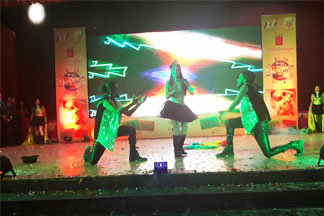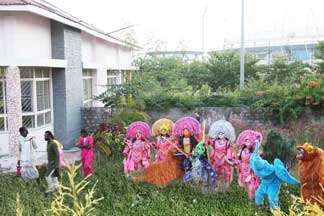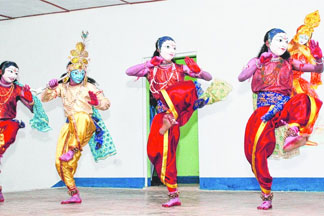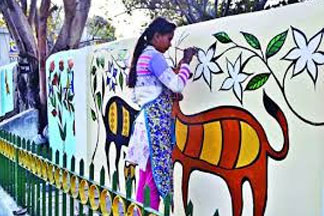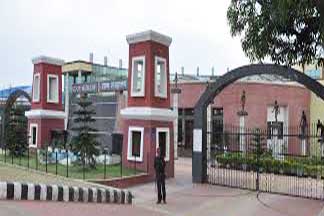KANWAR
Kanwar in Jharkhand, in the category of Scheduled Tribes, at 31st place, 2003. Was incorporated under the Scheduled Castes and Scheduled Tribe Order (Amendment) Act, 2002, published in the India Gazette on January 8, 2008 by the Ministry of Law, New Delhi, New Delhi. Accordingly, Coal was included in the form of 32 B Scheduled Tribes. Kanwar, residing in Jharkhand, is essentially a part of Kanwar, living in Madhya Pradesh. Still, their population is highest in Madhya Pradesh. According to the census of 1981, their number is 5,62,998 from the state of Madhya Pradesh. I have given this number 5,62,200 in my book, Kumar Suresh. Kanwar explains his euphemism to Mahatmastatta's Kurus. According to one tradition, after two defeats of Kurwa in Mahabharat's war, two pregnant women ran into the hill area north of the Mahanadi, and one shepherd and another took refuge in a Dhobi's house. Here they gave birth to a boy and a girl. They are the only fathers of this tribe. In this way Kanwar is the descendant of the survivors of the Kauravas.Rijile (1891) also described Kanwar as a descendant of the Kauravas and described them. He has described the five subdivisions of Kanwar - Chetia, Cherava, Dua, Paikar and Routia covered. Conservative view of Kanwar has been kept from Proto-Arctralyde Burg. Their skin color, nose width, lips are thick, mouth wide, stiff, short black, straight and rough face-beard. Ladies' height is two and a half times less than men. According to Kumar Suresh, the cover belongs to the Siddar of Chhattisgarh in Madhya Pradesh. They also accept their origin from the Kauravas. Trivedi also considers Kanwar as an abdominal of Kurus. According to him, it was the Nirvanshi king of Ratanpur who was a vinvasi sainik.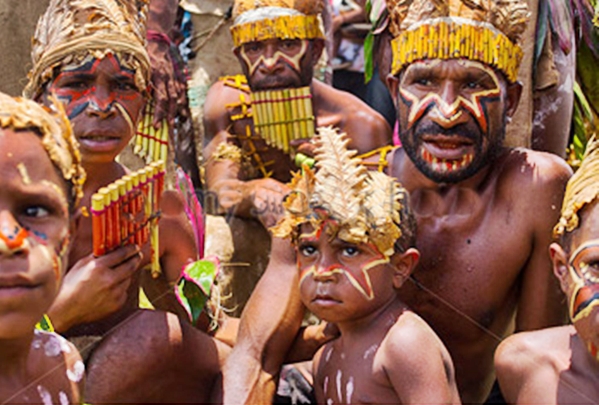
Proximity :There is a large tribe which is found mainly in Raigad Sarguja, Raipur, Rajanandergong. Jharkhand is covered in its south western border districts like Gumla, Simadega and Palamu. According to the 2001 census, the total number is 10000. Dumri, Chanpur and Kurdeg block, I have a concentration of them. Their villages are inhabited in the wild-mountain areas. Simadega - From the Kuradeg to Gumla or the middle of the road going to the central message, they also get scattered villages. About 1356 families of Kanwar in Gumla, Simdega and Palapu districts were scattered. The population is above 10,000. Kanwar met - living in different villages along with other people in Jule Gow. Which is called Kanwar Tola. They still have more contact with Orissa since Kanvar is also found in Orissa. According to the census of 1981, there are 8549 in Orissa and 20231 in Maharashtra. Kanwar has already been placed in Scheduled Tribes category in Orissa and Madhya Pradesh. But in Bihar, these backward castes have been listed in Annex. Now in Jharkhand, this Anu has been consolidated in the list of Scheduled Tribes.
Home - Household Goods: Their homes are made of clay. The roof is of tile or pallet. In the house there are two rooms. The verandah also happens. There is a door, but it does not have any kind of rubbish or rosary. Someone has a big house The goods in the house are very low and simple. Barkatan is found in single cot, pedestrian, matia, mat, fenugreek or aluminum. Some steel utensils are also available. Arrows are bows for hunting, but there are no skilled hunters. To kill the machali, the Kumani or the small traps also get to see in the houses. Spade, pink, broom, soup, basket, ganti, hoof etc. are mainly home appliances.
Costume: Their costumes are cheap and simple. Men use thick dhoti, Ganji, Anga, Gumbha, Wearing of sarees and sometimes blouses too. Tattooing is prevalent. But there is no special emphasis on this. The gems of jewelery are in their women, but due to weak economic conditions, they use jewelery of some of the cheapest weapons. Flower belt is also the means of makeup.
Meals: These are non-vegetarian, but meat fish rarely get food. Eat fish to eat, do not sell it. Rice and fat food are the main food. From the forests, greens, needles, roots, fruits also bring flowers.


